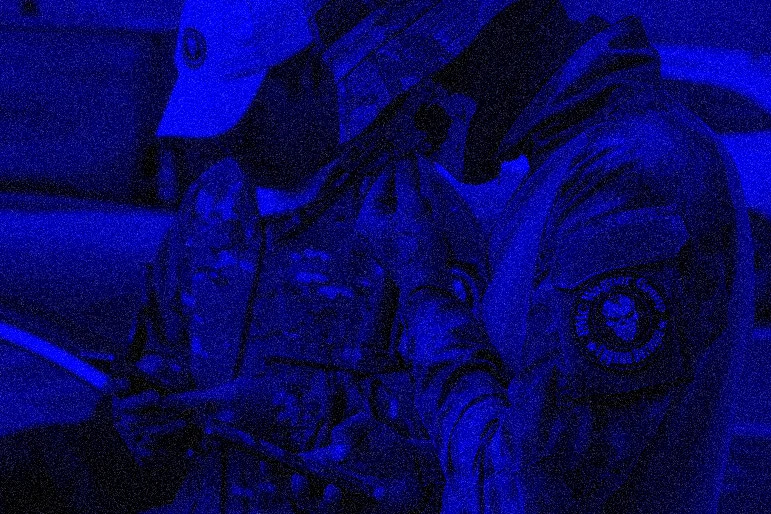Read Full Report: Russian Mercenary and Paramilitary Groups in Africa: Changes and Impacts Post-Wagner Rebellion
Key Intel
Shift in Control: Following the Wagner Group's failed 2023 rebellion, Russia formalized control over mercenary operations in Africa under the Africa Corps.
Continued Presence: Russian mercenaries maintain a clear presence in six African countries: Burkina Faso, CAR, Libya, Mali, Niger, and Sudan.
Economic Exploitation: Russian mercenaries exploit instability to extract resources, undermining local economies and fostering corruption.
Human Rights Violations: Documented atrocities, including targeted killings and sexual violence, have significantly increased in countries with Russian mercenary presence, particularly in Mali and CAR.
Public Sentiment: Public sentiment analysis in West Africa reveals a predominantly negative perception of Russian mercenaries, with a focus on human rights abuses and failed security promises.
Regional Instability: Spillover violence into neighboring countries, such as Mauritania and Chad, exacerbates regional instability and threatens to destabilize the Sahel further.
Western Displacement: Russian mercenaries are gradually replacing Western and UN forces, positioning themselves as an alternative security provider despite worsening security situations.
Influence Operations: Information operations by Russian mercenaries aim to manipulate public opinion and promote anti-Western narratives to secure new partnerships.
Summary
Since the Wagner Group's failed rebellion in 2023 and the subsequent death of its leader, Yevgeny Prigozhin, Russia has consolidated its control over mercenary operations in Africa through the Africa Corps. The Africa Corps, under the direct supervision of the Russian Ministry of Defense, has absorbed many former Wagner operatives and continues to operate in six key countries: Burkina Faso, CAR, Libya, Mali, Niger, and Sudan.
Despite Moscow’s attempt to rebrand and centralize these operations, the Africa Corps has continued Wagner’s patterns of exploitation and violence. In countries like Mali and CAR, mercenary activities have led to widespread human rights abuses, including targeted killings and sexual violence against civilians. The economic exploitation of local resources, particularly in conflict zones, has further destabilized affected regions.
Public sentiment across West Africa is increasingly negative toward Russian mercenaries, particularly in Mali, Burkina Faso, and Niger, where atrocities against civilians have been widely reported. In neighboring countries like Mauritania and Chad, spillover violence has raised concerns about the broader regional impact of Russian mercenary activities.
Furthermore, Moscow’s information operations continue to promote anti-Western narratives and portray Russian mercenaries as effective security partners despite their failure to curb rising militant Islamist violence. The Africa Corps’ influence operations have also targeted junta governments, offering them military support in exchange for resource extraction and political allegiance, further undermining stability in the region.
Report Guide
Overview of the Report’s Structure
The report provides a comprehensive analysis of Russian mercenary and paramilitary activities in Africa following the 2023 Wagner rebellion. It covers the structural changes within these groups, their operational presence, economic exploitation, human rights violations, and public sentiment across the region. Below is a structured breakdown of the report, followed by a detailed analysis.
1. Background and Context of Russian Mercenaries in Africa (Pages 1-5)
Since 2018, Russian private military contractors, primarily under Wagner, have proliferated across Africa. Following the 2023 rebellion, the Kremlin has restructured these operations under the Africa Corps, aiming for tighter control over mercenary activities.
Key Developments:
Establishment of Africa Corps under the direct control of the Russian Ministry of Defense.
Integration of former Wagner fighters and operational realignment under Russian military command.
Strategic use of mercenary groups to project Russian influence while evading international accountability.
2. Presence and Activities of Russian Mercenaries in Africa (Pages 6-10)
Russian mercenaries operate in six primary countries: Burkina Faso, CAR, Libya, Mali, Niger, and Sudan. They engage in four core military activities: combat operations, political protection, training of local forces, and information warfare.
Burkina Faso: Recent entry by Africa Corps through the newly formed Brigade Bear, primarily tasked with protecting military junta leaders and training local forces.
Mali: Continuation of Wagner’s presence, with a focus on counterterrorism operations and political protection. Key incident: Battle of Tinzawaten (July 2024), resulting in significant casualties among Malian forces and Wagner personnel.
Libya: Consolidation of Wagner’s operations under Africa Corps, with approximately 1,800 reinforcements arriving in early 2024 to secure oil assets and stage future operations.
3. Human Rights Violations and Civilian Impacts (Pages 11-13)
Russian mercenary operations have led to widespread human rights abuses, including targeted killings, torture, and sexual violence against civilians. These abuses are particularly prevalent in Mali and CAR.
Mali:
March 2022 Moura operation: Over 500 civilians killed during a counterterrorism operation led by Wagner and Malian forces.
Sexual violence against women and girls during operations, with evidence of systematic rape and torture.
CAR:
Wagner operatives implicated in indiscriminate violence against civilians, including targeted assassinations of opposition figures RAND, page 14.
4. Economic Exploitation and Resource Extraction (Pages 26-30)
Russian mercenaries leverage instability to extract valuable resources, often undermining local economies and fostering corruption.
Libya: Russia seeks to secure control over oil wells to fund paramilitary activities, with Africa Corps assuming Wagner’s previous assets.
CAR: Gold and diamond mining operations controlled by Wagner have continued under Africa Corps, with profits funneled back to Russian military networks.
5. Public Sentiment and Influence Operations (Pages 32-35)
Public sentiment analysis reveals a predominantly negative view of Russian mercenaries across West Africa, driven by reports of human rights abuses and failed security promises RAND, page 32.
Mali: Videos of atrocities committed by Wagner operatives circulated on social media, fueling outrage against the group and undermining its public image RAND, page 33.
Burkina Faso and Niger: Russian mercenaries accused of exacerbating local conflicts and fueling ethnic tensions through disinformation campaigns.
6. Regional Spillover and Geopolitical Implications (Pages 35-39)
The destabilizing effects of Russian mercenary operations extend beyond host countries, impacting neighboring states and regional security.
Mauritania: Wagner and Malian forces conducted cross-border operations, looting villages and abducting civilians.
Chad: Armed Chadian groups trained by Wagner have attempted multiple incursions, threatening the stability of the Déby regime.
Discussion Questions
How does Russia’s consolidation of mercenary operations under the Africa Corps alter the strategic landscape in Africa?
What are the long-term implications of Russian mercenaries exploiting local resources in conflict zones like Libya and CAR?
How can African governments balance the perceived security benefits of hiring mercenaries with the associated risks of human rights abuses and destabilization?
What role do public sentiment and information operations play in shaping the narrative around Russian mercenary activities in West Africa?
In what ways can regional organizations like ECOWAS and the African Union effectively counteract the influence of Russian mercenary groups?
How could the presence of Russian mercenaries in Africa affect international peacekeeping missions and UN operations?










Share this post